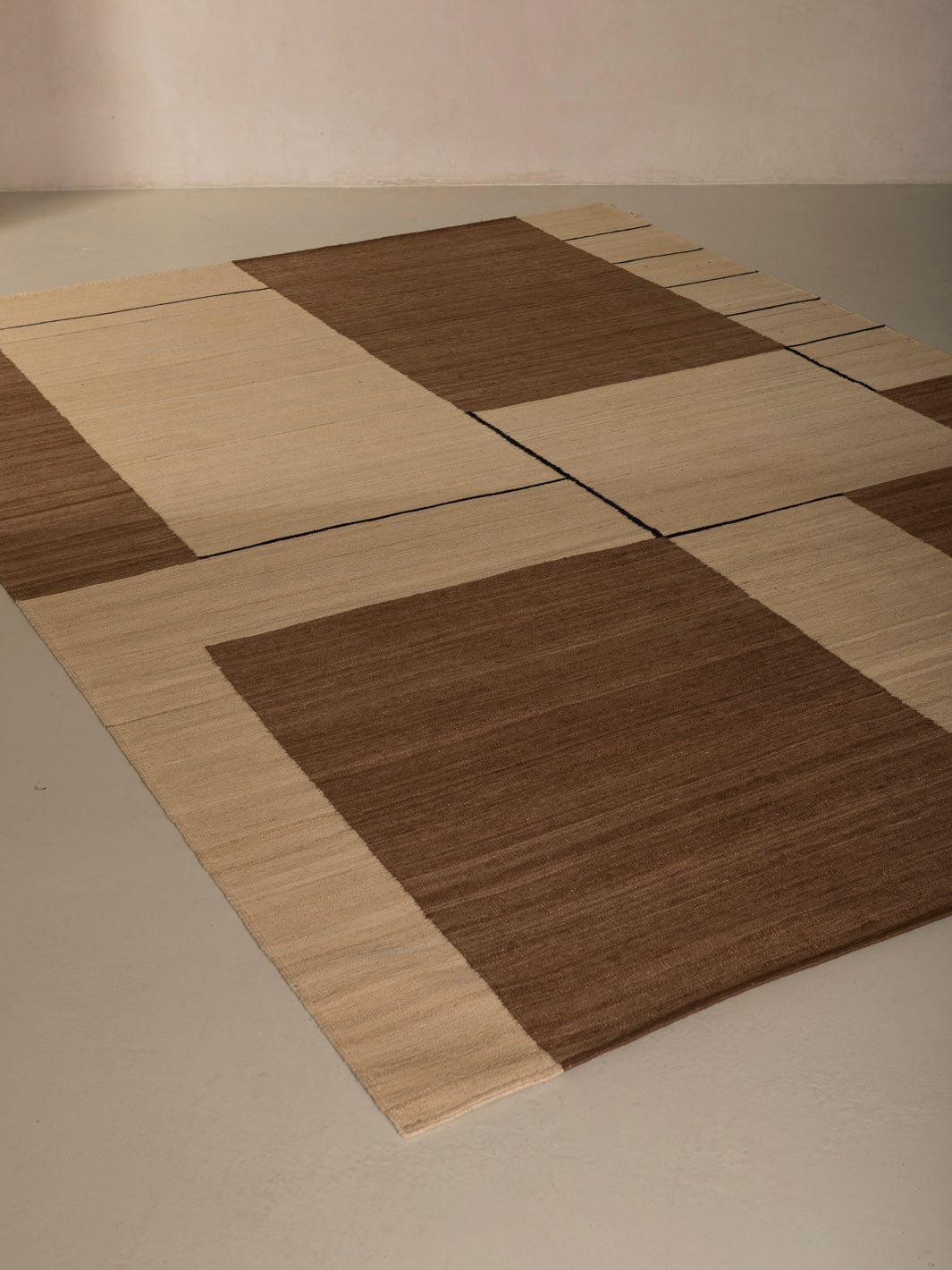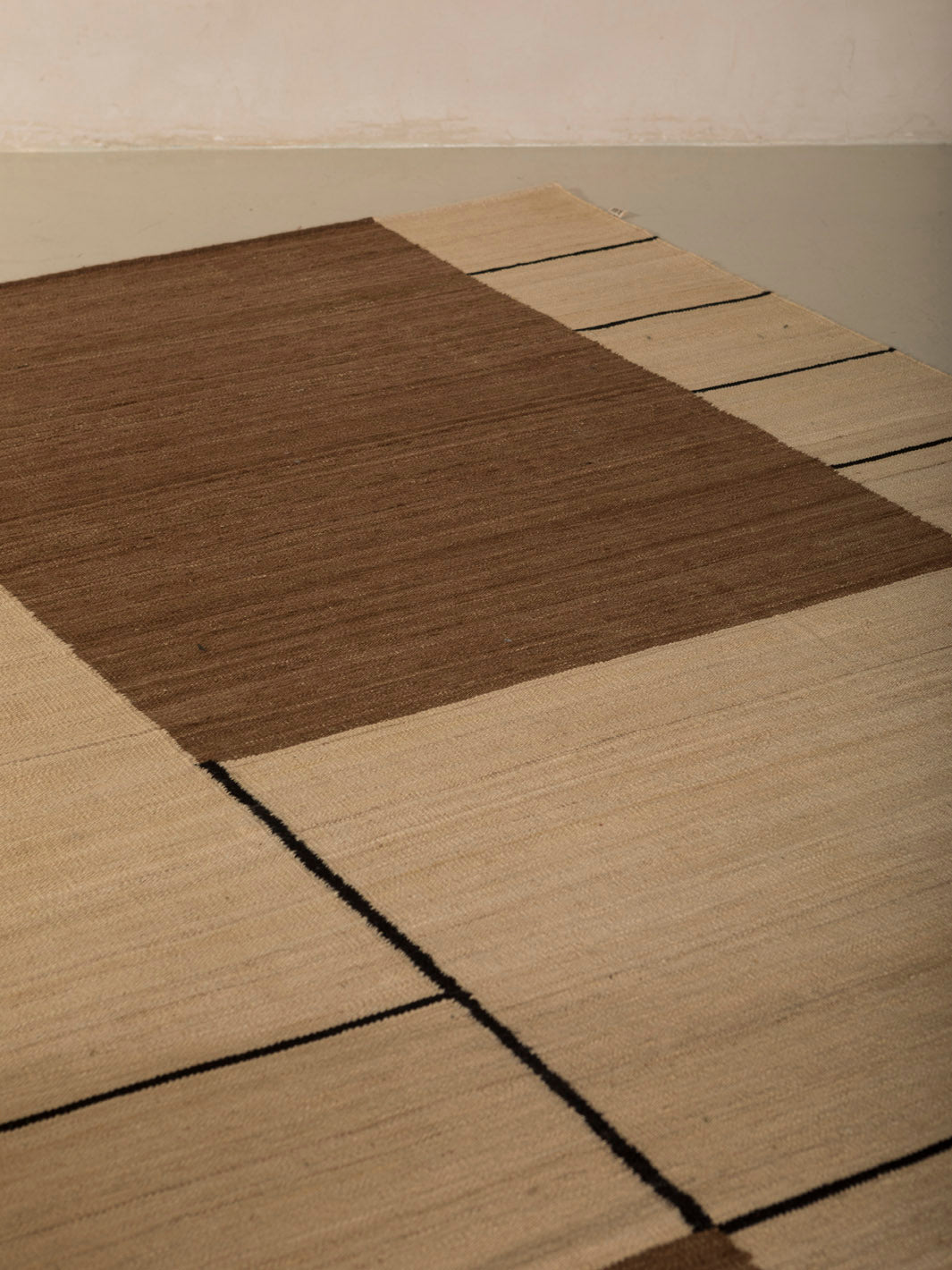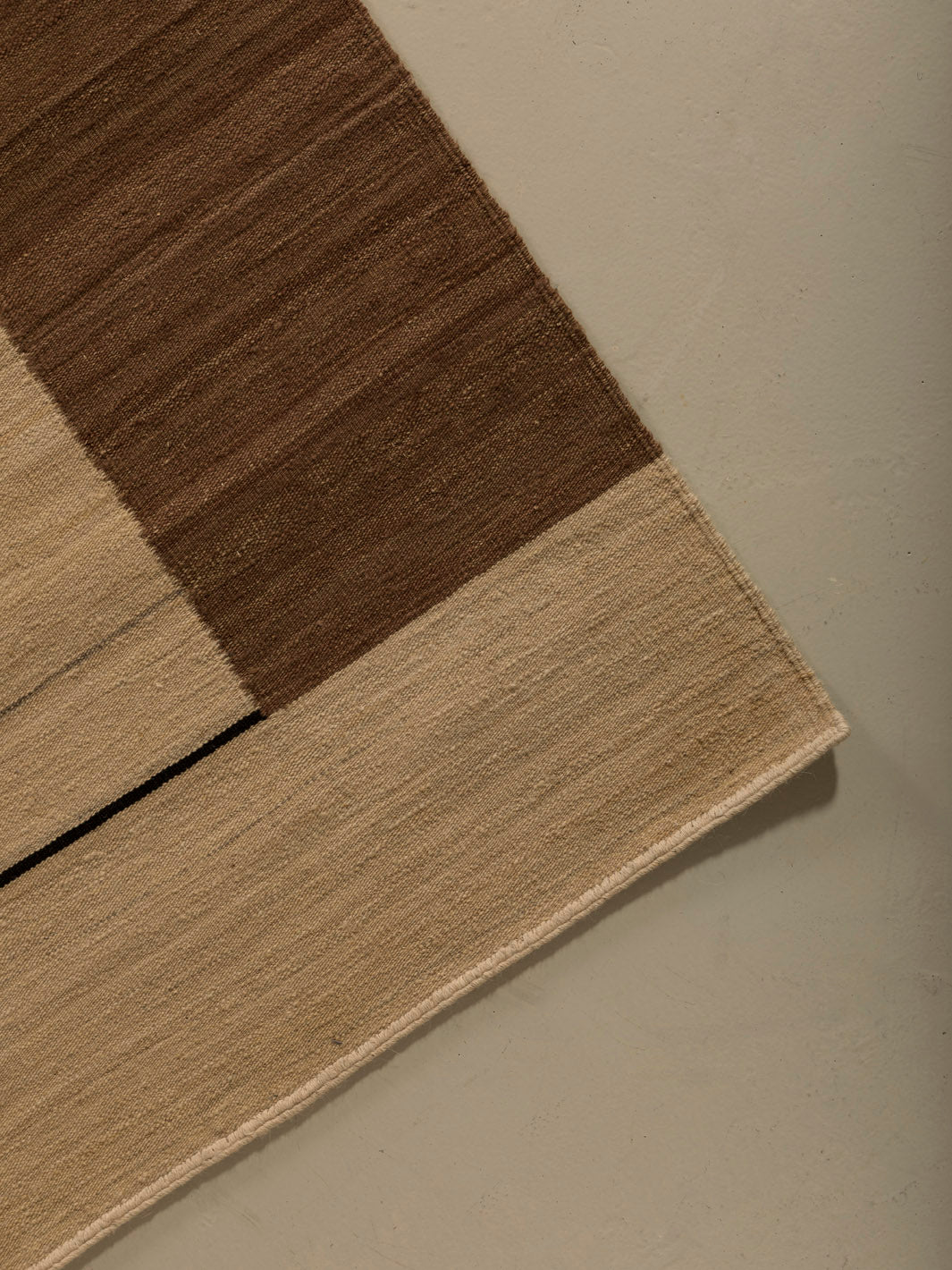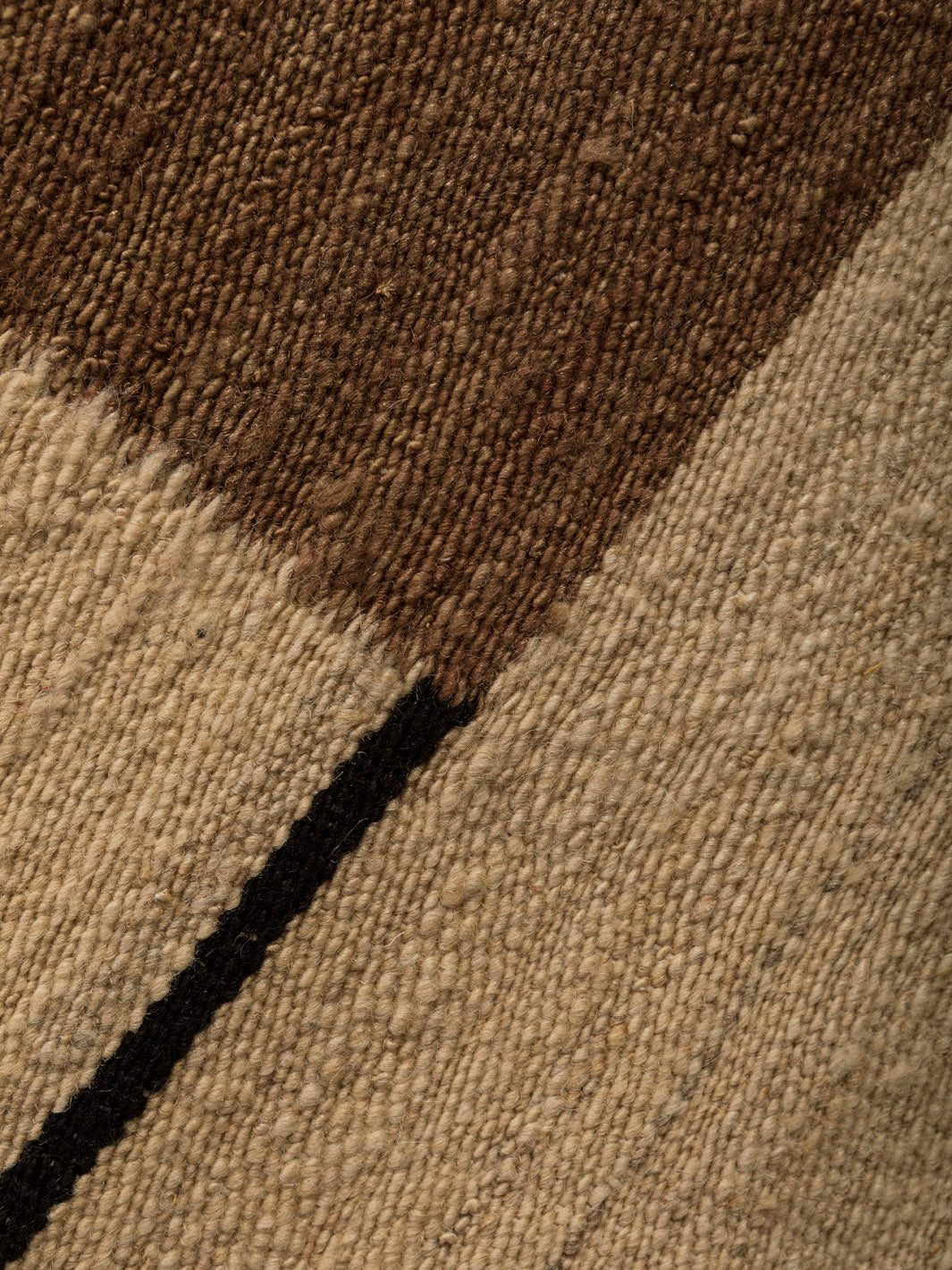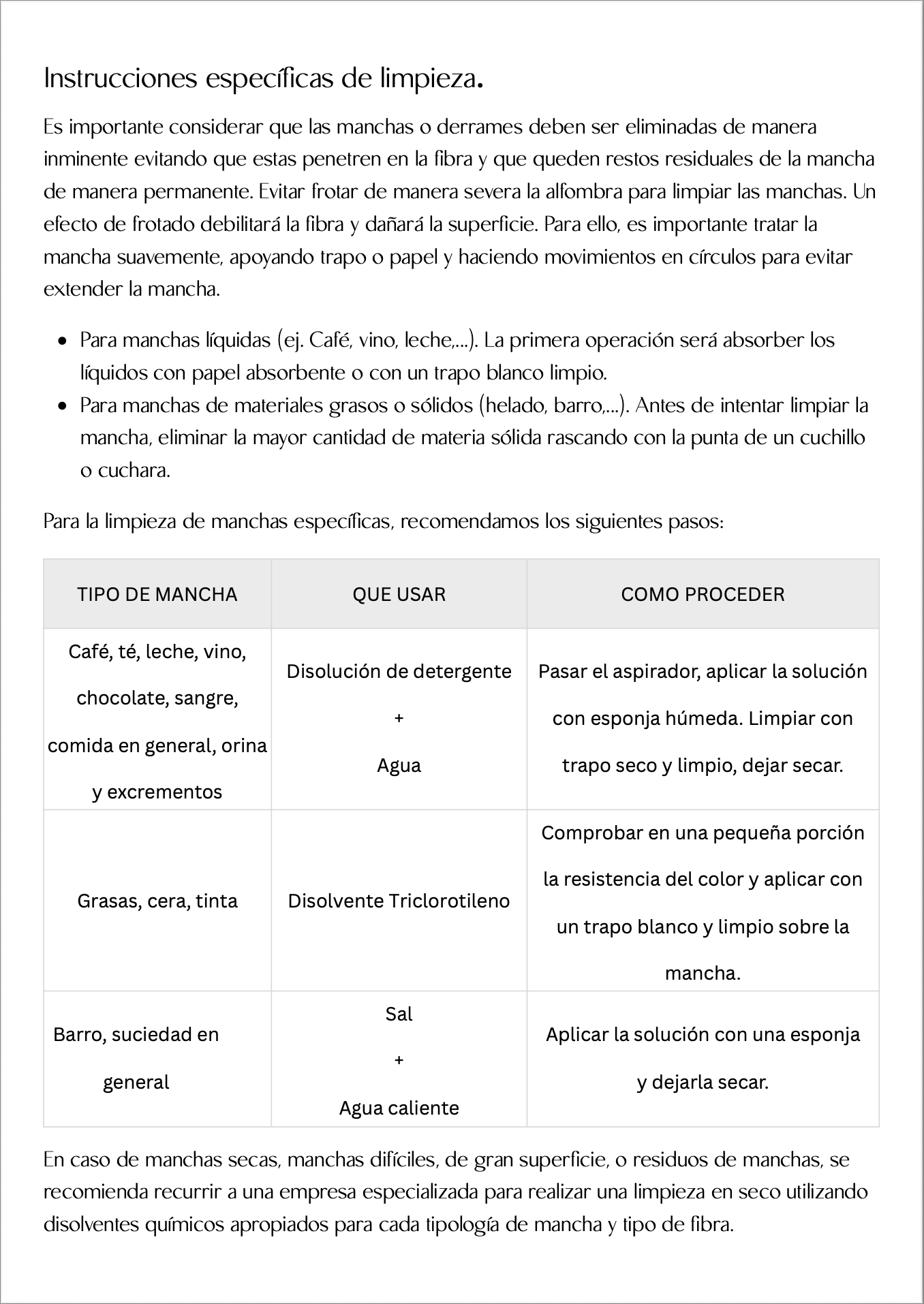Kilim Piet Brown
Inspired by the work of Piet Mondrian and the principles of Neoplasticism, the Kilim Piet rug transforms the floor into a canvas of visual balance. Its geometric design, composed of blocks of deep brown and natural tones, evokes the rational abstraction of modern art, reinterpreted here with the warmth and texture of 100% natural Afghan wool.
Each piece has been handwoven by skilled artisans, following traditional methods that respect the rhythm and nobility of the material. The minimalist structure of the pattern, with its carefully arranged horizontal and vertical lines, creates a serene and powerful presence, ideal for contemporary spaces that value functional art.
A piece that, like the art that inspires it, seeks the essential harmony between form, matter and color.
170x240cm
Composition: 100% Afghan Wool
Weight: 1900 g/m2 | 4 mm
Technique: Flat woven
Afghan wool is known for its
rusticity and resistance, qualities
which retains its origin in sheep
adapted to climatic conditions
hard.
Its fiber tends to be rougher, which
which makes it ideal for carpets
durable and wear-resistant.
We find this fiber in kilims
providing a patina effect
aged in the carpets.
Loose threads and knots (Shedding):
It's normal for rugs to shed some threads and/or lint in the first few months of use. The amount of lint (commonly referred to as pilling) is in no way a quality defect, as it is a characteristic of these materials. The fiber count decreases considerably after some time of use and affects the rug's appearance, quality, and comfort.
Likewise, with use, small knots or seemingly loose ends will appear on the surface. These are the knots used to join the fibers together by hand.
to create a single filament before weaving the rug. This is not intended to damage the rug's structure:
• To remove loose fibers, we recommend strong, regular vacuuming.
• For knots or fibers that protrude from the surface of the carpet, we recommend either tucking them into the carpet with the tip of a pair of scissors, or carefully trimming them by hand with scissors.
Effect of light exposure:
Jute or hemp, like any other natural material of plant origin, is especially sensitive to color changes caused by UV rays. Prolonged exposure of rugs to sunlight can cause discoloration. In areas exposed to direct sunlight, we recommend using curtains or glass with solar filters to prevent discoloration and aging.
premature carpet.
To prevent color changes across the entire surface of the rug, it's very important to rotate and reposition it every two months. This is especially true when furniture or items are on the rug that could leave marks or signs of minor discoloration.
Optical effect on the surface (Shading):
Only on the surface of cut-pile jute or hemp rugs may a shift in tone appear, resembling an uneven shadow or even a stain. This is an optical effect due to the different orientation and styling of the vertical fibers. This optical effect will vary depending on the light and the orientation from which the rug is viewed. This cannot be considered a defect or deterioration of the rug.
GENERAL CLEANING INSTRUCTIONS.
Regular cleaning is essential to keep your carpet in good condition and preserve its original quality. Use a good vacuum cleaner, preferably at low speed, and always
sucking in the direction of the hair.
We recommend the moderate use of state-of-the-art vacuum cleaners with rotating percussion brushes, which can mechanically accelerate premature aging of the carpet.
Steam cleaning or any other method that involves a substantial increase in temperature (over 30°) is not recommended. We recommend dry cleaning.
For a deeper and more effective cleaning, we always recommend contacting an industrial carpet cleaning specialist.
These rugs are entirely handmade. It is therefore important to consider that variations in size, color, texture, etc. will be
intrinsic characteristics of each model.
Jute, cotton, nettle, abaca and hemp are natural fibers of plant origin.
The final fiber will vary in color depending on the batch and the time of year in which it is harvested. Therefore, the colors may vary slightly from the original sample.
The dyeing process for these plant fibers is also entirely artisanal and may also undergo slight variations in tone depending on the manufacturing batch and the base color of the plant fiber.
Completa el Look
